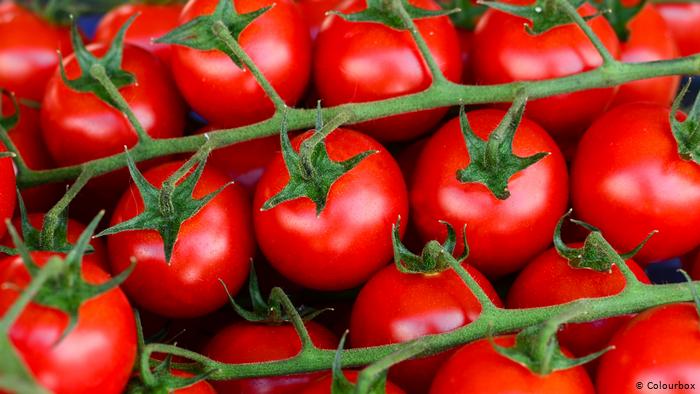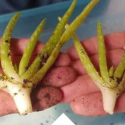
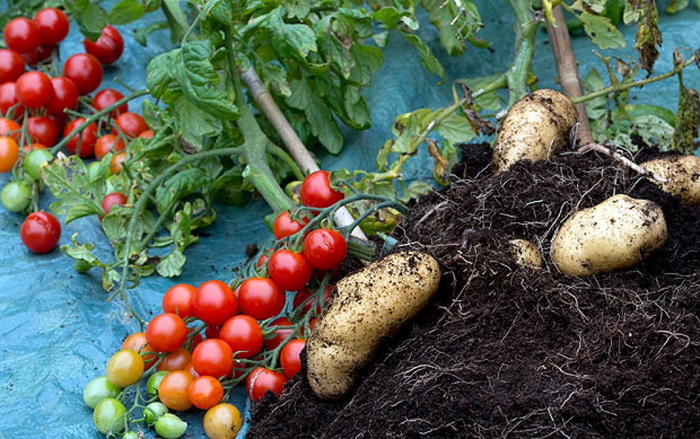
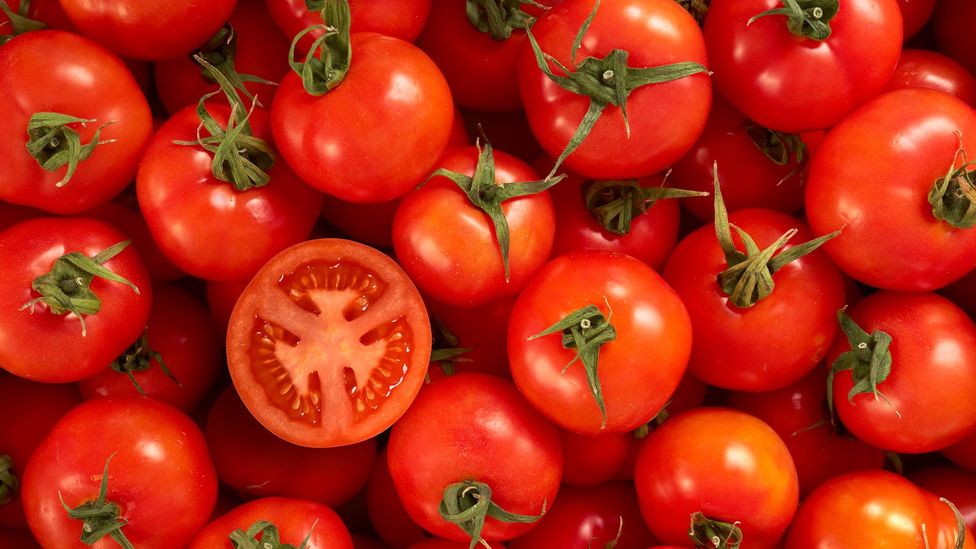


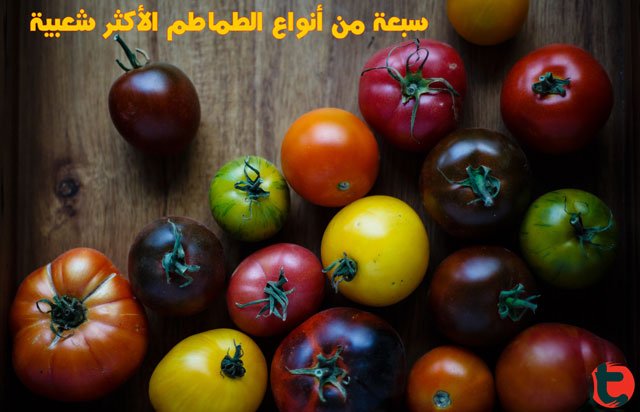

Pruning Tomato Plants for a Bigger Harvest
February 6, 2021 by HappyDIYHome Staff
Pruning tomato plants is vital if you want to encourage lots of healthy growth and flowers. As any keen grower will tell you, the more flowers there are on a tomato plant, the more fruit they are able to produce. Whether you are growing them outside or indoors, regularly pruning tomato plants also helps to keep them healthy and problem free.
يعد تقليم نباتات الطماطم أمرًا حيويًا إذا كنت ترغب في تشجيع الكثير من النمو الصحي والزهور. كما سيخبرك أي مزارع متحمس ، فكلما زاد عدد الزهور الموجودة على نبات الطماطم ، زاد عدد الفاكهة التي يستطيعون إنتاجها. سواء كنت تزرعها بالخارج أو بالداخل ، فإن تقليم نباتات الطماطم بانتظام يساعد أيضًا في الحفاظ عليها صحية وخالية من المشاكل.
Strictly speaking, you don’t have to prune your tomato plants. If left to their own devices they can still be productive members of the vegetable garden. However, even a little light trim helps to maximise the appearance and flavor of your fruit.
بالمعنى الدقيق للكلمة ، ليس عليك تقليم نباتات الطماطم. إذا تُركوا لأجهزتهم الخاصة ، فلا يزال بإمكانهم أن يكونوا أعضاء منتجين في حديقة الخضروات. ومع ذلك ، حتى القليل من التقليم الخفيف يساعد على زيادة مظهر ونكهة الفاكهة إلى أقصى حد.
If you want to keep your vines neat and tidy, this is your complete guide to pruning tomato plants.
Pruning tomato plants helps to keep them healthy and encourage fruit production.
Favorite Posts
إذا كنت ترغب في الحفاظ على كرماتك نظيفة ومرتبة ، فهذا هو دليلك الكامل لتقليم نباتات الطماطم. يساعد تقليم نباتات الطماطم في الحفاظ على صحتها وتشجيع إنتاج الفاكهة. المشاركات المفضلة
Contents
Why does Pruning help Tomato Plants?
Do all Types of Tomato Plant Need to be Pruned?
The Best Time to Prune Your Vines
How to Prune Tomatoes
The Missouri Technique
Don’t Remove too Much Foliage
Pruning in Compact Spaces
Topping your Plants
Do not Deadhead Your TomatoesAdditional Tips
Supporting Growth
What to do With Pinched out Suckers
محتويات:
لماذا يساعد التقليم نباتات الطماطم؟
هل تحتاج جميع أنواع نبات الطماطم إلى التقليم؟
أفضل وقت لتقليم الكروم
كيفية تقليم الطماطم
تقنية ميسوري لا تزيل الكثير من أوراق الشجر التقليم في المساحات المدمجة تتصدر النباتات الخاصة بك لا تموت الطماطم
نصائح إضافية دعم النمو
ما يجب القيام به مع مصاصات مقروص
*Why does Pruning help Tomato Plants?
Pruning your tomato plants is beneficial or a number of reasons. Firstly, it can help to discourage the plants from wasting energy on foliage production. Instead, if pruned correctly, the plants can be encouraged to direct their energy towards producing lots of great tasting fruit.
Secondly, while unpruned foliage does eventually produce flowers and fruit, allowing plants to become too large means that the fruit will be small and lacking in flavor. This is particularly noticeable when compared to the fruit of regularly pruned plants. In short, removing excess foliage helps to maximize fruit production.
As well as encouraging more, and larger, fruit to form, regularly pruning your plant also helps it to keep in a healthy shape. If allowed to grow without trimming or training, the vines and foliage can easily outgrow their space and smother other, neighbouring vegetables.
Cutting away excess foliage also helps sunlight to reach the inner and lower parts of the plant. This again helps to encourage growth and fruit production. Keeping your garden neat and tidy also helps to keep plants healthy and free from disease and infestation.
Pruning away excess foliage helps the remaining leaves to dry more quickly. This means that bacteria and fungi have less time to take hold.
Finally, pruning also helps to lift foliage and branches away from the ground. This means that soil is less likely to splash up onto the stems and foliage during watering or when it is raining. Keeping the stems as clean as possible further helps to keep plants healthy.
Despite requiring regular pruning, the tomato is still one of the easiest vegetables to grow.
*Do all Types of Tomato Plant Need to be Pruned?
There are two types of tomato plant, determinate and indeterminate.
Determinate or bush varieties are compact specimens. They develop to a fixed size and usually ripen all their fruit within a period of a few weeks.
Indeterminate or vining varieties continue to grow throughout the season. During this time they continuously produce new fruit.
You do not need to prune determinate varieties of tomato plants. Trimming these varieties may stunt flower formation and fruit production.
Indeterminate varieties need to be pruned on a regular basis and staked.
Indeterminate or vining varieties require both support and regular attention. Compact, determinate varieties do not need so much attention.
Whilst not very common, there are also semi-determinate varieties. These are often hybrid specimens such as Celebrity. It can be difficult to know how to care for a semi-determinate plant. The best option is to prune the plant lightly, allowing two or three strong central stems to form.
*The Best Time to Prune Your Vines
Begin trimming tomato plants when they reach over 1 ft in height. While you can allow the vines to grow a little taller than this they should definitely be pruned before they hit the 2 ft mark. Do not begin pruning until there are a healthy number of branches growing from the main stem.
Never prune the vines before they reach 1 ft in height. Pruning can cause some plants to enter shock. Small or delicate specimens may not recover from the process. By the time the vines reach 1 ft they should be sufficiently robust enough to withstand the effects of pruning.
The best time to prune growing vines is on a dry day, as early in the morning as possible. This gives any wounds created during the pruning process time to heal before the damp of the evening arrives.
*How to Prune Tomatoes
Pruning tomato plants is a relatively straightforward process.
Focus your attention on the suckers. These emerge in the “V” space where the branch emerges from the main stem. If allowed to remain in place the suckers can grow into branches, significantly increasing the amount of foliage, flowers and fruit on the plant. While this can be beneficial, too much foliage can cause the plant to become overcrowded.
Cutting away the suckers diverts energy into flowering and fruit production.
Suckers should be removed when they are as small as possible. Removing larger suckers, or lots of foliage can cause stress. Overly stressing a plant may lead to flower drop which impacts on the amount of tomatoes your vines produce.
Smaller suckers, those under two inches in length, can be pinched off the plant. Larger suckers should be cut away with small garden scissors. Make sure that your tools are clean and sharp. Disinfect or sterilize your tools after use to prevent disease spreading between your crops and flowers.
The Missouri Technique
When removing suckers you can either take the simple approach or the Missouri approach. Simple pruning is simply removing the entire sucker from its base. Missouri pruning requires you to pinch out the tip of the sucker, allowing one or two sets of leaves to remain in place. The Missouri technique helps to protect fruit from becoming sunburnt and, as more leaves are in place, encourages photosynthesis. The Missouri approach is best adopted by growers in hot or sunny positions. It can also be beneficial if your tomato plant has become overgrown.
As we have already noted, suckers can develop into healthy branches which are filled with flowers and fruit. If you want to maximize fruit production allow a few suckers to remain in place. However, allowing too many suckers to remain in place can have a detrimental effect on the health of the vine and its yield. I find that a good compromise is to remove all the suckers that emerge below the first flower cluster. This helps the main stem to remain strong. The upper suckers are allowed to remain in place and develop foliage, flowers and fruit.
Source: https://www.youtube.com/watch?v=q4IUhZMA9O0
Prune away any low hanging branches, particularly those that are touching the ground. Alternatively you can train the branches to grow up or along a support or trellis. Don’t allow the branches and foliage to contact the ground. This can encourage bacteria and fungal problems that, if left untreated, may spread to the rest of the plant.
Don’t Remove too Much Foliage
Be careful when pruning not to remove too much foliage. This can expose the fruit to the intense heat of the sun and may lead to sunscald. When pruning my tomatoes I try to leave some of the highest branches and foliage in place to act as a partial sunscreen. Removing too many leaves can also hamper photosynthesis and may stunt growth.
A properly pruned plant will present the vast majority of its leaves towards the sun.
Pruning in Compact Spaces
If space is limited, it is best to prune your plants so that they have only one or two main stems. This should also be done if you are supporting the vines with a stake or trellis. A tomato cage, such as the Growneer Plant Cages, help to confine the plants sprawling nature whilst also supporting healthy growth. This makes training vines easy. It also enables lots of air to circulate around and through the vines and foliage.
To confine growth to the main stems, pinch out the suckers. This prevents the plant from becoming overly bushy and outgrowing its space. Preventing additional stems from forming means that the plant concentrates its energy on the remaining central stems, This helps the vines to become sturdy and robust. They will then be easier to secure to the support with plant ties.
*Topping your Plants
Around 30 days before the first frost of the fall you need to remove as much of the foliage and stems that aren’t bearing fruit as possible. This is known as topping. It may seem harsh but by removing all the growing tips you give the set fruit that is still on the plant the best possible chance to ripen and mature.
Topping your tomatoes encourages the remaining fruit to mature before the first frost.
*Do not Deadhead Your Tomatoes
Tomato plants do not require deadheading. Unlike roses and other specimens that require regular maintenance, you should never remove spent flowers from your tomato plants. Removing flowers prevents fruit from forming.
*Additional Tips
Water only the soil around the stems. Aim to keep the foliage as dry as possible. Never water from above. Watering from above, especially if you regularly prune the vines, can increase the likelihood of soil splashing up and contacting any open wounds. Dirty wounds are more likely to become diseased. A watering can offers you more control than a hose, further helping to keep plants clean and hydrated.
Supporting Growth
Supporting plant growth makes pruning easier. Unsupported vines are also prone to toppling or snapping, particularly when weighed down with lots of heavy fruit. Unsupported vines can also entangle or clump together, creating dense mounds of foliage. This can hamper air circulation, which can encourage infestations and disease.
Training the leader or main stems with a loose, figure eight tie helps to support the plant and train its growth. Further support ties can be added to the vines as the fruit develops and the plant becomes heavier. PGarden-EZ Green Soft Twist Ties allows you to support growing vines and branches without causing damage to the bark.
5 Support growing plantsSupporting growing vines raises them from the ground and helps air to circulate, this keeps your specimens healthy.
*What to do With Pinched out Suckers
The most obvious solution is to place the suckers on the compost bin. However, you can also root them. Rooting suckers is a great way to get more tomatoes for free.
Rooting suckers takes about 10 days. Immediately after pinching out, place the sucker in a container filled with clean water, the leaves should sit above the water.
Place the container in a bright spot, away from direct sunlight. Allow the sucker to remain in the water as roots form. Remember to change the water every few days. Suckers can rot if allowed to sit in stale water.
Once roots have formed and are about an inch long remove the sucker from the water. Pot the sucker in a small pot, about 4 inches in size, filled with damp potting mix. Place the pot in a shady spot and allow the sucker to grow on for a few days.
After about a week the sucker can be planted in a larger pot or raised bed and grown on as tomato plants.
One of the easiest vegetables to grow, pruning tomato plants helps to encourage fruit production. It also helps to keep your vines healthy and prevents them from outgrowing their space. An easy task, pruning should always be on your list of garden chores.
ـــــــــــــــــ
من أجل حصاد أكبر
مشاركة:جيسي happydiyhome-Jesse



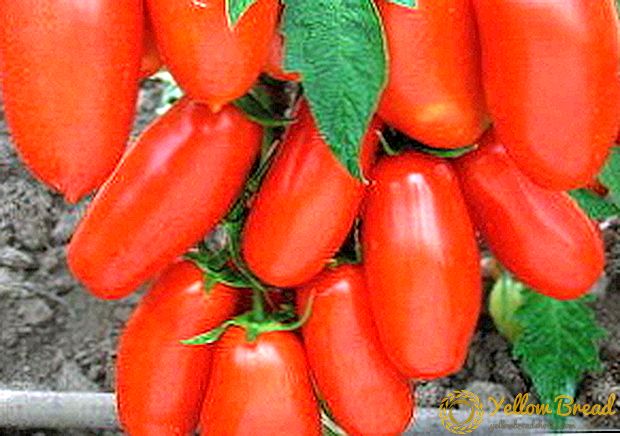

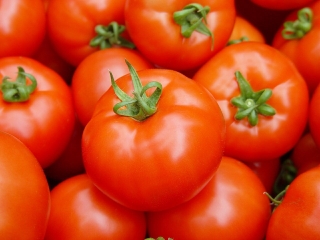
tomato plants. https://www.youtube.com/embed/tZfOkKxxZoE?autoplay=1&feature=oembed


